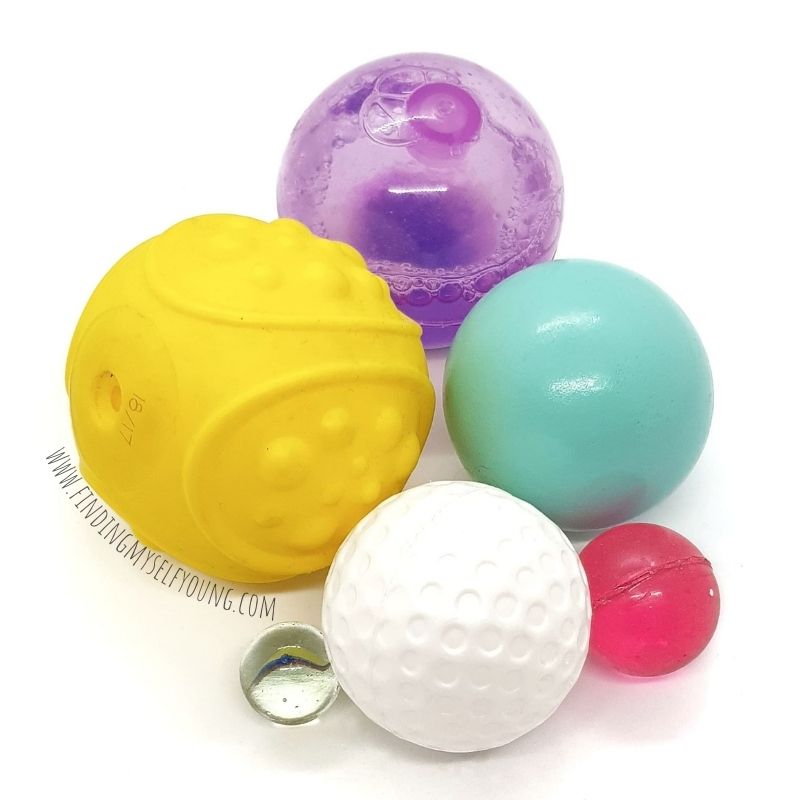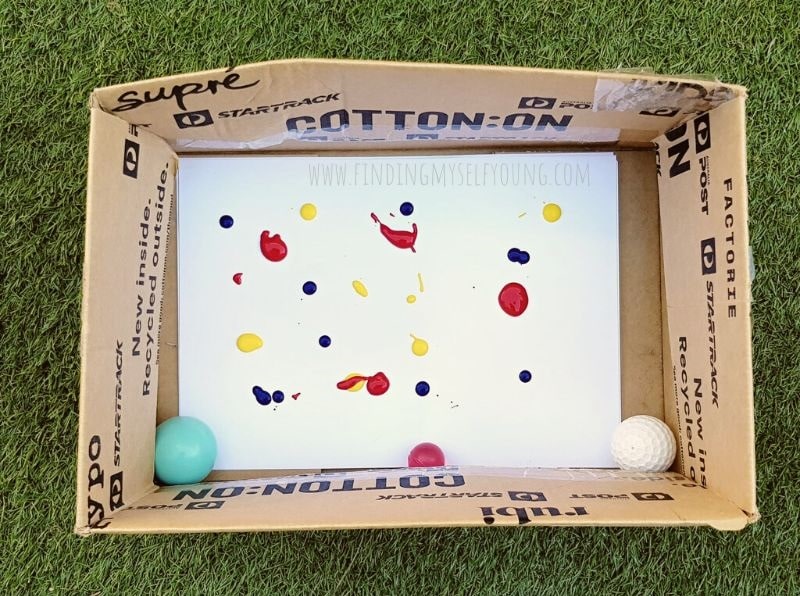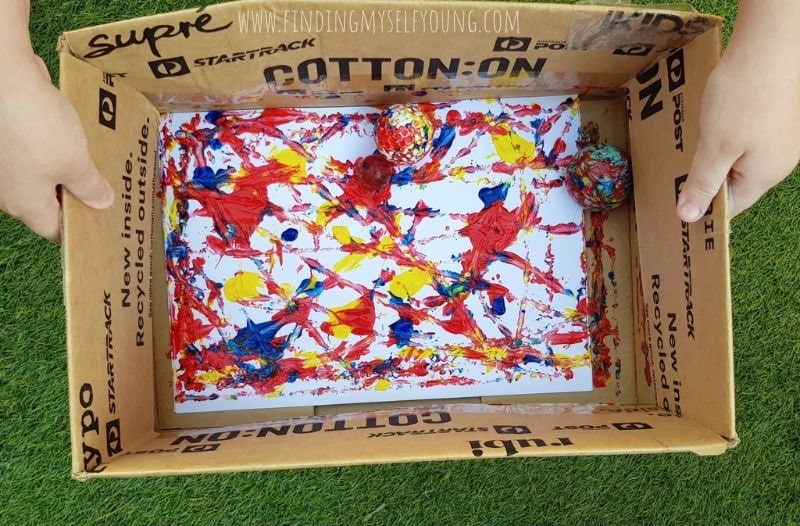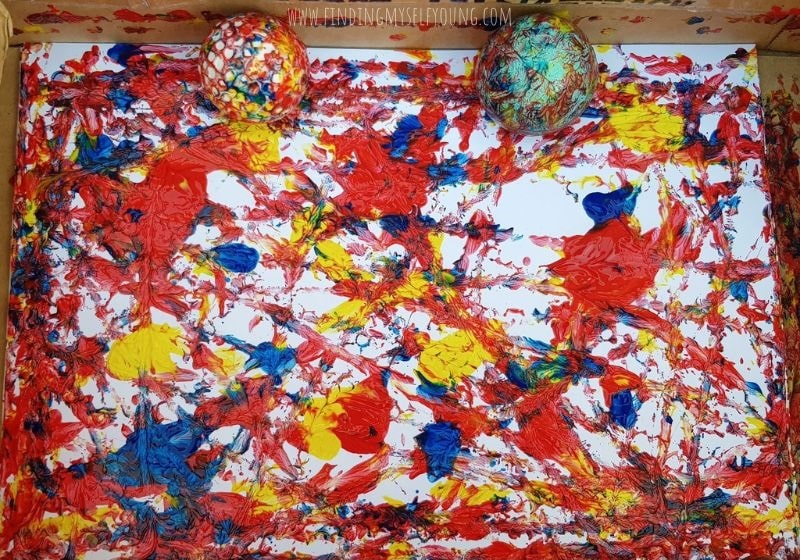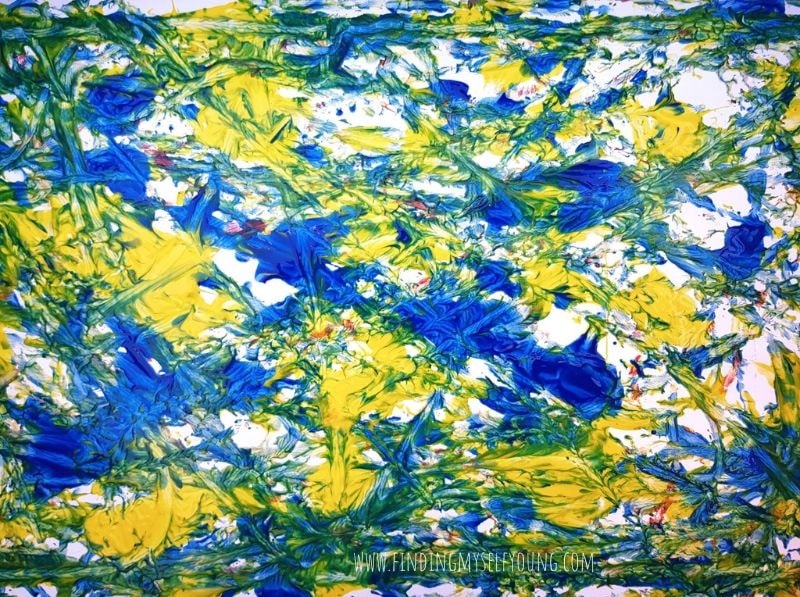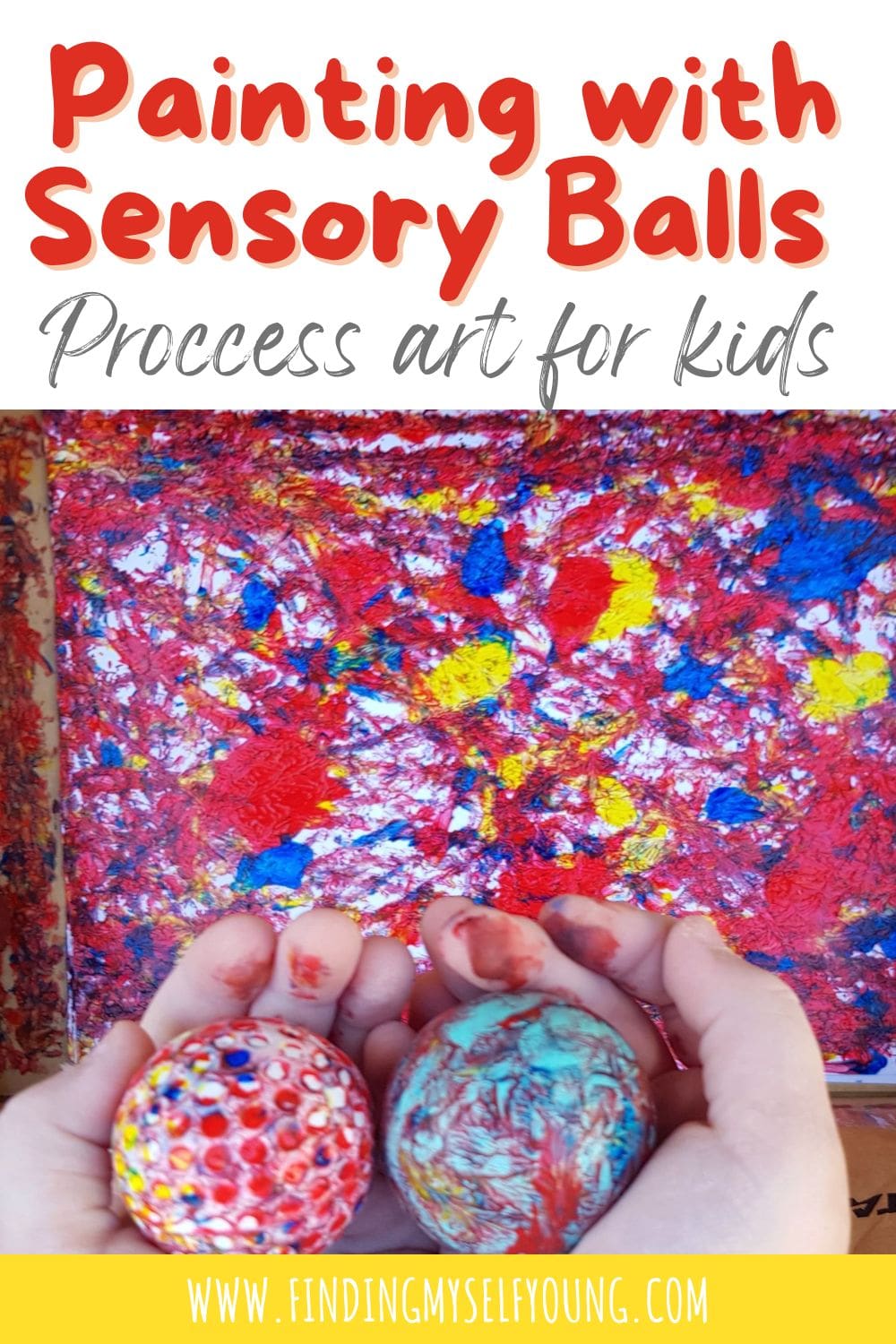Ball painting is a fun interactive painting experience for toddlers, preschoolers and school children where they can create beautiful paintings without using a paintbrush, or touching the paint.
It's a great way for children to combine movement and creativity in a sensory experience, that's essentially mess free. Follow our step by step instructions to create ball paintings with your children or class.
While painting with balls, children are using kinetic energy and gross motor movements to roll the balls around the box, through the paint, to create abstract paintings. Ball painting is a process art activity which focuses more on the process of creating the painting, rather than the final outcome, however it does create some really pretty, unique artwork which is perfect to display or repurpose as gifts.
BALL PAINTING WITH KIDS
Ball painting is really quick to set up and can be done indoors or outdoors with a few simple items. The best part is the kids can also help with the set up {if you want them to}. If you're doing it as a classroom activity, or with a group of kids, and don't have enough carboard boxes you can use cheap plastic trays which can be reused.
Ball painting supplies:
- Cardboard box
- White A4 paper
- Washable paint
- Different sized balls
I have a habit of hoarding lots of recyclables for craft, cardboard boxes included, so we had lots of different box sizes to choose from. We ended up with one box the exact size of the paper and one box slightly larger than the paper. The larger box resulted in paintings that covered the whole page and the box the same size as the paper had a white edge remaining, because the bigger balls couldn't get the paint all the way to the edge.
We used 6 different balls, 3 for each of the girls, in a variety of sizes and textures. We ended up with a bouncy ball, marble, sensory ball, golf ball, wooden ball and a water filled plastic ball. You can also do ball painting with just 1 ball, but we found it interesting exploring how the difference in sizes and weight affected the marks left by the balls.
You also definitely want to make sure you only use washable paint as the balls will end up completely covered in paint. Although this is a relatively mess free activity anyway, washable paint makes clean up easier if your kids touch the balls or paper {trust me they'll get curious and touch the balls at some point}.
HOW TO PAINT WITH BALLS
1. Place paper in the bottom of the cardboard box or tray. I knew the girls would want to create more than one painting each so I put a few sheets in.
2. Add a few squirts of paint to the paper. We used a mixture of primary colours across the page to see how they'd blend as the balls rolled through the paint.
3. Add the balls to the box and move the box in all different directions to roll the balls across the paper. Keep rolling until you're satisfied with the design created.
4. Leave the finished paintings to dry. They'll be quite wet so leave them to dry on a flat surface or dry outside on a clothes airer.
The girls ended up doing 3 different paintings each, exploring different colours each time. First they both did paintings with red, blue and yellow to see how the ball painting would spread the paint and whether it would make secondary colours as it mixed. They then chose to do more paintings with just 2 colours so the colour mixing would be more obvious.
Developmental Benefits of Ball Painting
- Gross motor skills - encourages movement and experimenting with movement.
- Helps release energy - kids can release their energy in an appropriate and controlled way.
- Expresses creativity - the children are in control of the design they make.
- Colour recognition & mixing - reinforces colours and a fun way to create secondary colours.
- Introduces scientific concepts - such as kinetic energy and paint viscosity.
- Cause & effect - children will learn how their movements affect the way the ball spreads the paint.
- Explorative play - kids are using their senses and actively learning how to paint with a ball while doing the activity.
- Mess free sensory play - ball painting is a great way for children to be exposed to a messy sensory activity without actually getting messy themselves.
Disclosure - This post contains some affiliate links for your convenience, which means I may earn a small commission at no cost to you, should you make a purchase.


